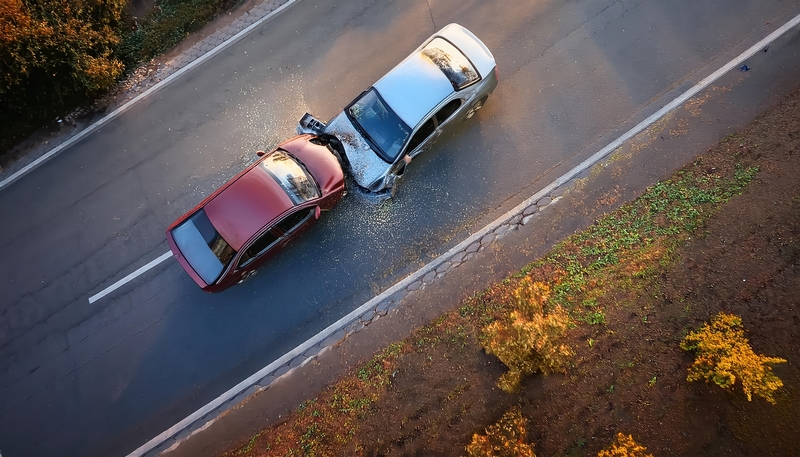A recent Court of Appeal decision involving the going and coming rule offers an opportunity to explore the often-misunderstood area involving injuries sustained during commutes to remote workplaces.
In the published decision of Zenith Insurance Company v WCAB (Javier Hernandez), C101549 (2025), the 3rd District Court of Appeal reversed the WCAB and found that neither the special risk or dual-purpose exceptions to the going and coming rule applied to an applicant who was injured while riding home in a vanpool, arranged by another employee.
The applicant was employed as a farm labor by a farm contractor that provided workers to agricultural locations. Applicant lived in Yuba City, but was assigned to a location 60 miles away in Winters, Calif. The employer did not provide transportation and its employment contract specified that applicant was solely responsible for his transportation to the job location.
Applicant testified that he did not have a driver’s license or access to a car, and that there was no reasonable public transportation that could have taken him from his home to the job site. However, a coworker arranged a carpool that was a “personal side business independent of the employer.” The coworker represented himself as a supervisor for the employer, even though he was not one. Applicant paid $10 a day to ride in the van.
Applicant’s supervisor at the job site knew that employees were being delivered to the job site in the van but otherwise had no control or comment on the method of transportation.

Applicant was severely injured during his commute home, sustaining catastrophic injuries. His claim was denied AOE/COE under the going and coming rule as a non-compensable injury during the commute. At trial, the judge concluded that the claim was compensable under the special risk and dual-purpose exceptions to the going and coming rule. The WCAB upheld this decision.
The Court of Appeal reversed, noting that the special risk exception did not apply because that exception only applies where an injury occurs during a commute that requires the employees to take special risks – -such as making difficult turns into oncoming traffic – -in order to reach the workplace. The court also held that there was no control by the employer between the alleged risk of the commute and the premises or conditions.
The appellate justices rejected the WCAB’s determination that because applicant had no other way to get to work, he was subjected to a special risk. The court held that there was no suggestion that the employer was aware that applicant could not drive, and although they were aware of the vanpool, there was no indication that the employer knew that the carpool could constitute a “risk.” They also noted that the going and coming rule “has been applied to employees who make their own carpooling or ride-sharing arrangements.”
The court also rejected the dual-purpose exception, holding that the trip from his home to the workplace did not serve a dual purpose by benefiting the employer. The simple fact that the employer provided agricultural laborers to businesses that need them did not create a special benefit to the employer. Although applicant tried to argue that he was performing work while commuting, this was rejected as the employer would only assign work duties once the employees arrived on location.
The Hernandez case illustrates that the going and coming rule remains a viable defense to claims for injuries sustained during a commute. The employer’s knowledge that employees are carpooling to work does not, by itself, render commuting injuries compensable. Moreover, the fact that an employee does not have access to a vehicle or even reliable public transportation does not, by itself, transform the commute into a “special risk.” Similarly, an employee is not “performing work“ while commuting in a carpool, even if the employees are discussing employment matters during the commute.
As always, proving the going and coming exception is a factually-intensive effort requiring reliable witnesses as well as documentary evidence. The employer in Hernandez presented evidence showing that applicant was expressly advised that he had to find his own transportation to work. Personnel documents, human resources forms, early deposition testimony, and credible employer witnesses are critical to prevailing in cases involving the going and coming rule.
Michael P. Burns is a Partner at Bradford & Barthel’s San Jose location. Before joining B&B, Michael practiced civil litigation and employment law. If you have questions about workers’ compensation defense issues, feel free to contact Michael at mburns@bradfordbarthel.com or (408) 392-8202.
Viewing this website does not form an attorney/client relationship between you and Bradford & Barthel, LLP or any of its attorneys. This website is for informational purposes only and does not contain legal advice. Please do not act or refrain from acting based on anything you read on this site. This document is not a substitute for legal advice and may not address every factual scenario. If you have a legal question, we encourage you to contact your favorite Bradford & Barthel, LLP attorney to discuss the legal issues applicable to your unique case. No website is entirely secure, so please be cautious with information provided through the contact form or email. Do not assume confidentiality exists in anything you send through this website or email, until an attorney/client relationship is formed.


